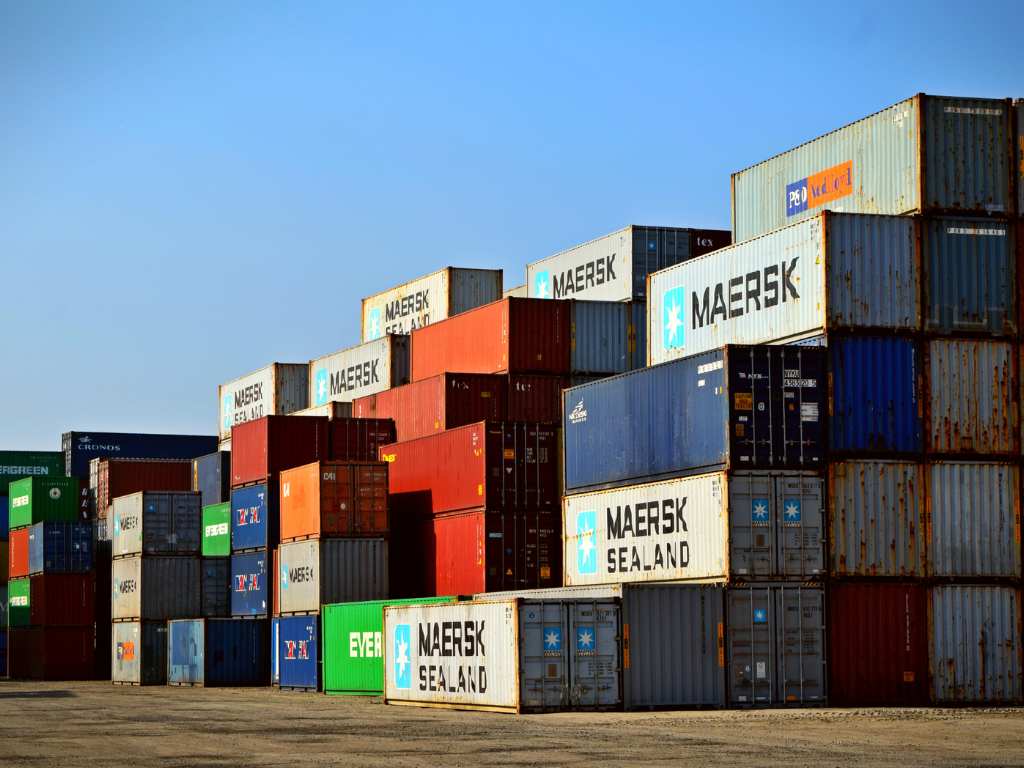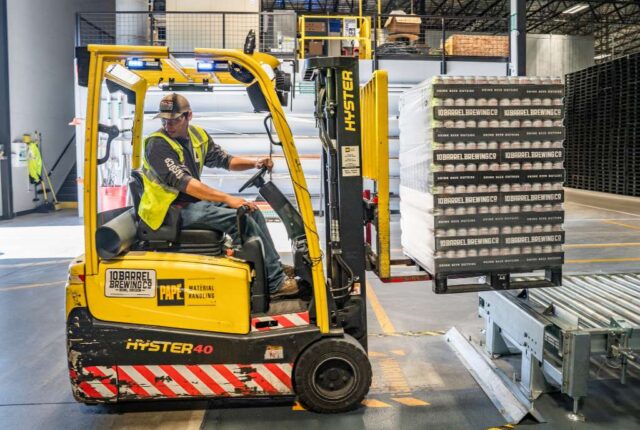
What is sustainable logistics?
Sustainable logistics’ – often called green logistics – involves the holistic management of logistics activities’ aimed at minimising environmental effects, enhancing economic efficiency, and fostering social equity throughout the supply chain. It is a progressive strategy that incorporates environmental and ethical factors’ into all phases of product flow – from acquiring raw materials to production, shipping, storage, distribution and final delivery.
As the worldwide economy progresses and climate change emerges as a pressing issue – sustainable logistics has transitioned from being merely a ‘good to have’ to an essential requirement. Customers, regulators and stakeholders’ are increasingly anticipating the businesses will exhibit transparency, ethical sourcing, carbon mitigation and environmental responsibility. Companies’ that do not fulfill these expectations face the dangers of reputational harm, monetary fines and erosion of customer confidence
Key pillars of sustainable logistics
- Ecological feasibility
Environmental accountability is fundamental to sustainable logistics’. The goal is to minimize greenhouse gas emissions, energy consumption and waste along the supply chain. Main strategies comprises:
- Route optimisation: utilizing data and AI driven software to identify the most effective delivery routes, bypassing congestion and minimizing fuel usage
- Eco friendly transport: embracing electric and hybrid cars, utilising biofuels’ and encouraging low emission freight alternatives’ such as rail and waterways
- Sustainable warehousing: incorporating renewable energy options like solar panels’ and utilising energy efficient solutions for lighting, refrigeration and airflow.
- Sustainable packaging: minimize the size and weight of packaging, removing single use plastics and opting for recyclable, compostable or reusable materials’
- Reverse logistics: promoting the returns, refurbishment or recycling of products’ rather than discarding them particularly in the electronics, fashion and automotive industries
- Economical sustainability
Building effective and lucrative logistics systems is another aspect of sustainability, in addition to protecting the environment. Logistics that is economically viable guarantees that green initiatives also lower operating costs and create long term value:
- Decreased fuel and energy costs: businesses can drastically cut operating costs by modernising cars, streamlining routes, and putting energy saving devices into place
- Process automation: combining advanced warehouse management systems (WMS) and transport management systems (TMS) to enhance efficiency, precision, and growth capacity
- Inventory efficiency: utilising predictive analytics and demand forecasting aids in avoiding overproduction while minimising excess inventory, waste, and storage expenses
- Long term ROI: while the upfront cost of sustainable technologies may be considerable, the investment payoff tends to be substantial due to decreased fines, minimised waste, and improved customer loyalty
- Social accountability
Being socially responsible is another aspect of sustainable logistics. Ethical supply chain procedures foster confidence and guarantee that companies’ are a member of an ecosystem of responsible international trade:
- Fair labor practices: guaranteeing that logistics workers, drivers, warehouse personnel and other supply chain participants are paid fairly, work in safe environments, and have legal safeguards
- Diversity and inclusion: promoting fair recruitment methods and inclusive workplace regulations
- Openness and trackability: leveraging blockchain and additional tracking technologies to trace the origins of products, confirm ethical sourcing, and offer consumers insights into the supply chain process
- Local procurement: collaborating with the nearby suppliers and communities to minimize transportation emission and support local economies
Practical methods to implement sustainable logistics
- Effective transportation system
Transitioning to energy efficient or electric delivery vehicles and utilising AI and GPS technology for efficient delivery route planning can greatly reduce emissions. In freight logistics – the combination of shipments’ (consolidation) and the use of multimodal transport (e.g., rail + truck) also aid in reducing emissions.
- Eco friendly warehousing
Storage facilities consume a lot of energy. Sustainability in this contact encompasses:
- Setting up solar panels and LED lighting
- Utilising intelligent HVAC systems for effective temperature regulation
- Utilising automated robotics to decrease energy waste and minimize labor
- Creating LEED certified structures aimed at maximizing energy efficiency
- Eco friendly packaging
This comprises:
- Minimal packaging that uses fewer resources and produces less trash
- Compostable substances created from cornstarch, mushroom Mycelium, or seaweed
- Promoting bulk shipping to prevent redundant repackaging
- Circular procurement networks
In circular logistics, items are created for reuse, refurbishment, and recycling. Returned items’ are repaired and put back into the supply chain instead of being discarded. This minimises waste in landfills’ and optimizes’ the use of resources
- Electronic solutions
By improving efficiency and visibility – digitization promotes sustainability. For instance:
- Blockchain improves traceability.
- IoT devices’ track vehicle emissions’ as they occur.
- AI and large datasets enhance demand prediction and route optimization.
- Cloud platforms enable operations’ without paper and enhance worldwide corporation
Benefits of sustainable logistics’
Adopting sustainable logistics has several advantages for customers, companies and the environment
- Minimised carbon footprint: decreased greenhouse gas outputs support international climate change objectives’
- Operational efficiency: process simplification lowers expenses while boosting productivity
- Enhanced brand reputation: a clear dedication to sustainability boosts customer trust and loyalty to the brand
- Regulatory adherence: keeping up with legal obligations aids in preventing penalties and preserving market entry
- Investor attraction: investors concentrating on ESG (environmental, social, and governance) are progressively drawn to eco friendly companies
- Customer satisfaction: modern shoppers desire quick, dependable shipping that has a lower environmental footprint

Conclusion
Sustainable logistics is changing the way the worldwide supply chain functions. It is more than a trend; its strategic, enduring approach for companies aiming for resilience, profitability and a significant impact on the planet. By harmonizing logistics and environmental and social principles – businesses can open a new phase of growth that honors individuals and the earth while providing outstanding value to clients.
The time has come to transition from reactive to sustainable operations. A cleaner, smarter and more responsible future is possible through sustainable logistics, whether it be through strategy, technology, or teamwork
FAQs
How can a company begin adopting sustainable logistics by maintaining current operations?
Begin with basic adjustments such as enhancing delivery routes, using recyclable packaging, or minimising empty return journeys. These actions enhance efficiency and lower emissions without needing significant structural modifications. Slowly incorporate more sophisticated tools such as eco friendly warehouses or electric transport vehicles.
Does embracing sustainable logistics raise total operational expenses?
Not always. Although certain environmentally friendly improvements might involve initial expenses, sustainable logistics typically results in long term savings due to enhance fuel efficiency, decreased waste, fewer returns, and better resource management
How can I make certain that my supply chain is genuinely sustainable and not merely a form of greenwashing?
Employ clear tracking methods – including digital traceability systems, blockchain technology or external certifications like ISO 14001 or GLEC. Consistent sustainability reporting and demonstrating qualifiable advancements – such as reductions in carbon footprint – foster trust among customers and stakeholders.
Can adopting sustainable logistics enhance our brand image among consumers?
Certainly! yes. Consumers of today are favoring brands that exhibit environmental responsibility more and more. Providing environmentally friendly delivery choices or demonstrating ethical supplier procedures can increase market competitiveness, maintain client loyalty, and trust
Related posts
What is Strategic Logistics Planning in Dubai?
Making strategic logistics planning to operate in the highly competitive infrast
How is Logistics Customer Service Related to Management?
Logistics management and logistics customer service are two sides of a single co
How to Manage Logistics Operations in Dubai?
Dubai is a crossroad or bridging city connecting multiple cultures and sharing t





Leave a Reply